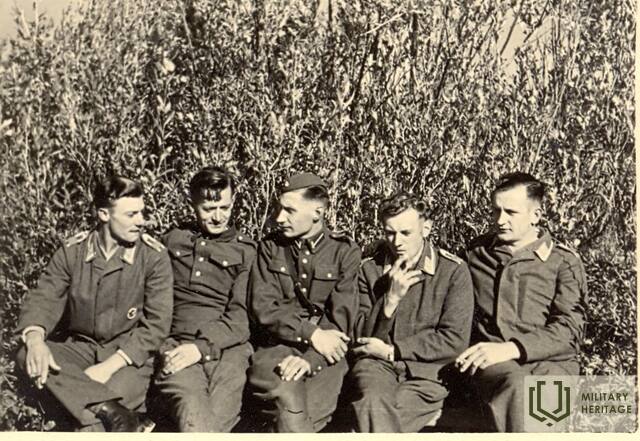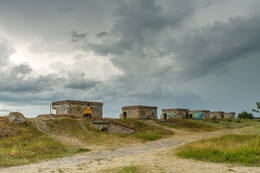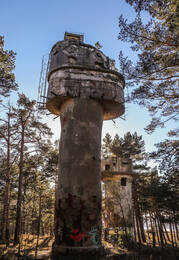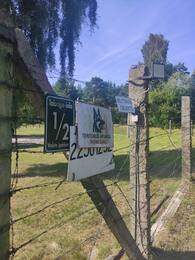Karosta - Landeplatz der deutschen He-111 im Jahr 1939 am Strand von Liepaja
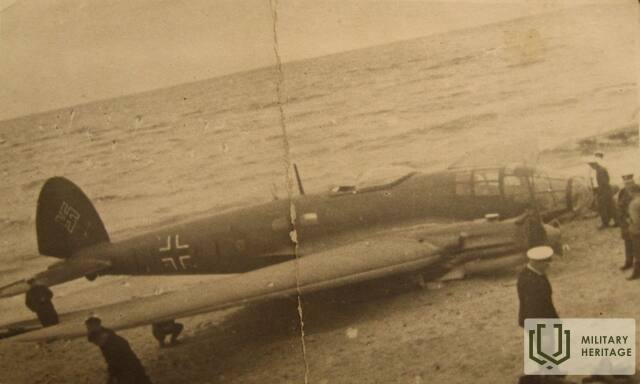
Am 11. September 1939 kam ein deutscher Henkel-Bomber vom Typ He-111 bei einem nächtlichen Angriff auf polnische Städte vom Kurs ab und musste am Strand von Liepāja notlanden. Dieses Ereignis wird in den Erinnerungen von Vilis Zobens, einem Einwohner von Liepaja und Offizier einer Verbindungskompanie der Kurzeme-Division, geschildert. Der Landeplatz ist in der Natur nicht markiert. Die ungefähren Koordinaten lauten N 56,59368° E 21,01598° - am Strand in der Nähe der nördlichen Festungen.
Am frühen Morgen des 11. September wurden alle durch den Lärm eines Tieffliegers gestört. Als wir hinausgingen, sahen wir ein großes, graues Flugzeug mit schwarzen Kreuzen auf den Flügeln. Nachdem wir eine Runde geflogen waren, landeten wir am Strand. Wir sind dorthin gegangen. Es war direkt am Meer gelandet. 3 Piloten waren von Bord gegangen - zwei deutsche Offiziere und ein Ausbilder. Auf die Frage, was mit dem Kommandanten der Kompanie passiert sei, antworteten sie, dass sie bei einem Angriff auf Polen gewesen seien, sich aber aufgrund der Beschädigung des Kompasses verirrt hätten und nicht zu ihrem Stützpunkt zurückkehren könnten. Wir brachten sie zur Unterkunft und zeigten sie in einem Raum. Der Krieg war für diese Männer vorbei, weil sie per Gesetz erklärt werden mussten. Sie bekamen Essen vom Offiziersclub, mit dem sie nicht zufrieden waren und wollten mit dem deutschen Konsul in Liepaja sprechen. Der Konsul kam am nächsten Tag, um zu dekorieren, und arrangierte das Essen wie folgt: Der Konsul bezahlte das im Hotel Liepāja bestellte Mittagessen. Es wurde von einem Schmucksoldaten gebracht. Ich habe mit einem deutschen Motorradlehrer gesprochen. Er war sehr arrogant und ein Anbeter Hitlers. Auch der Kommandant des Schmucks hatte allerlei Probleme damit. Wir waren alle glücklich, als sie am 1. Oktober nach Riga verlegt wurden.
Vilis Zobens, ein Bewohner von Liepāja, ein stellvertretender Offizier der Division Kurzeme, begann seinen Dienst in der lettischen Armee im Jahr 1925 beim 1. Liepaja-Infanterie-Regiment. Während seines Dienstes erlebte er die Ankunft der sowjetischen Truppen in Lettland.
Schwert, V. Erinnerungen, Liepājas Vārds (Lettische Volksfront). 1992
Zugehörige Zeitleiste
Zugehörige Objekte
Nordfestung Liepaja und Batterie Nr. 1 in Karosta
The Northern Forts are the best known and visually most impressive part of the Liepāja Fortress. Built by the Russian tsarist army in the late 19th century, their historical name is Fortress Battery No 1.
In November 1908, less than 10 years after its construction, the Liepāja Fortress ceased to operate, because its construction was acknowledged as a strategic mistake. Some of the cannons were dismantled and taken to the Kaunas Fortress in Lithuania, while others were remelted. Fortification structures were detonated twice in an attempt to destroy the fortifications. Elements surviving to the present day include artillery batteries not fully destroyed in the explosions and underground structures. Just like the Karosta, the Northern Forts were a closed military territory during the Soviet occupation. Visitors to the Northern Forts should be very careful. As in other places on the Latvian coast, the steep shore of the Baltic Sea in the Karosta is dangerous due to potential coastal landslides. Therefore, it is not allowed to walk under the ruins of the forts.
Karosta, der Militärhafen von Liepāja (die Tour)
Karosta ist das größte historische Militärgebiet im Baltikum und nimmt heute fast ein Drittel des gesamten Stadtgebiets von Liepāja ein. Der ehemalige Kriegshafen ist ein einzigartiger Militär- und Festungsanlagenkomplex an der Ostseeküste, der historisch und architektonisch nicht nur für Lettland außergewöhnlich ist. Zum militärhistorischen Erbe in Karosta gehören die Nordmole, die Nordforts, der Redan-Vorposten, das Gefängnis und der Wasserturm des Kriegshafens, die orthodoxe St. Nikolaus-Marine-Kathedrale sowie die Oskars-Kalpaks-Brücke.
Küstenartillerie-Batterie Nr. 2 von Liepāja
Unter den vielen Objekten von Liepāja Karosta ist die Liepāja-Küstenartillerie-Batterie Nr. 2 immer noch der geheimnisvollste Ort in Liepāja. Bei Batterie Nr. 2 wurden immer die Munitionsdepots der Truppen der verschiedenen bestehenden Mächte eingerichtet.
Batterie der Festung Liepaja Nr. 2 wurde weiter von der Küste entfernt gebaut und durch einen hohen Wall geschützt. Die Batterien waren mit 16 11-Zoll-Mörsern (280 mm) des Modells von 1877 bewaffnet. Nach dem Abbau der Festung wurden hier Munitionslager eingerichtet. Wegen Explosionsgefahr war das Gebiet 130 Jahre lang für die Öffentlichkeit gesperrt und bewacht, aber jetzt gibt es eine Ausstellung über die Aktivitäten des Hauptquartiers der 1. Kurländischen Division in den Jahren 1919-1940 sowie Fotobeweise der 1. Division Liepāja-Infanterie-Regiment, das 2. Ventspils-Infanterie-Regiment und das Kurzeme-Artillerie-Regiment.




